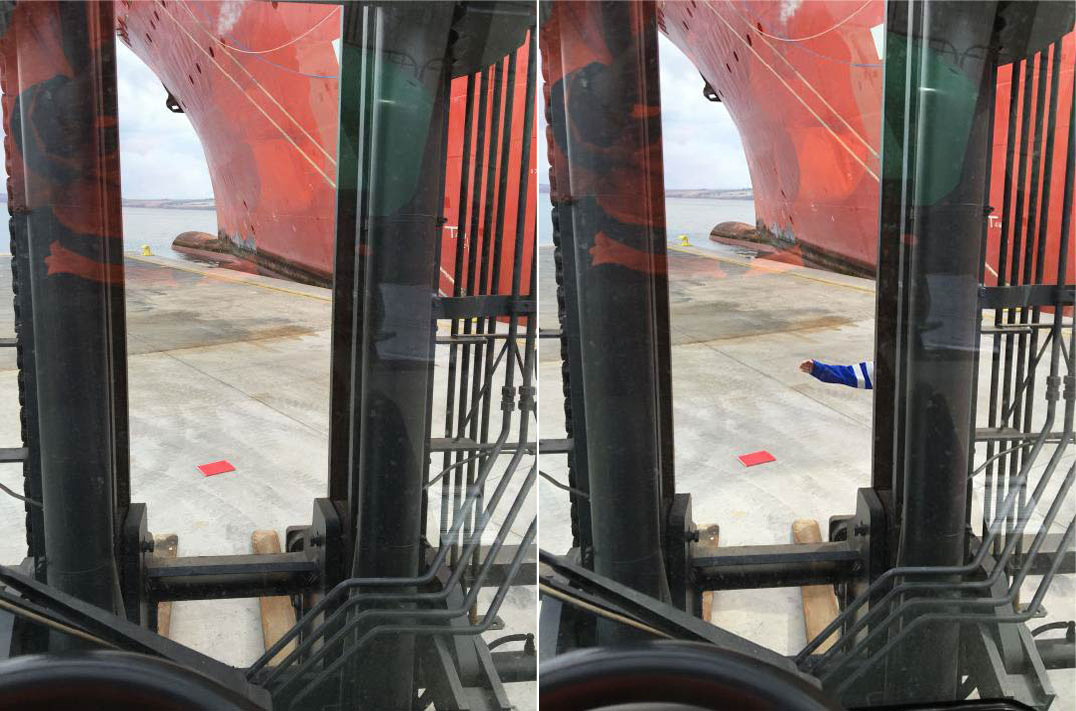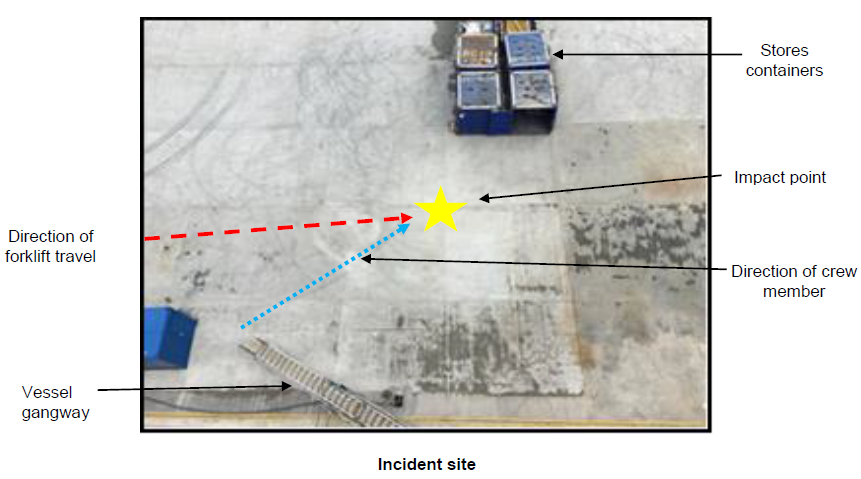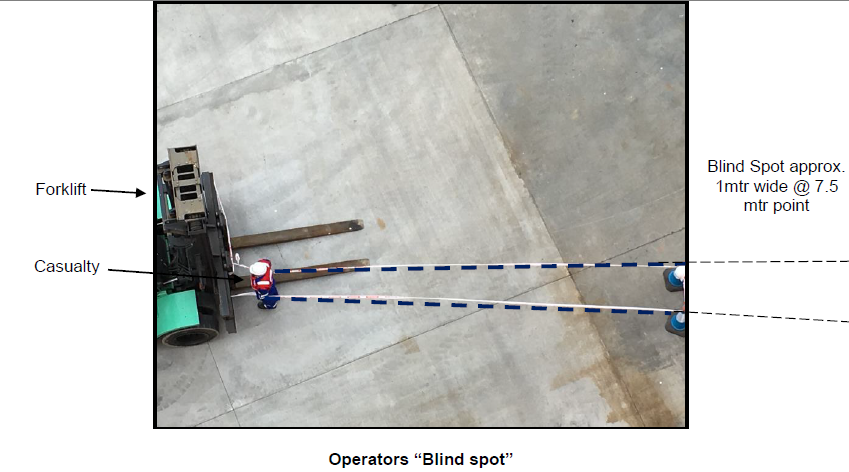Fatality: Crew member struck by forklift during quayside operations
A member has reported an incident in which a crew member was struck by a forklift truck during quayside operations, and suffered fatal injuries. The incident happened when a vessel crew member was tasked with unloading stores from a container on the quayside. He descended the vessel gangway and headed towards the containers situated close by. It was during this short excursion that the crew member was struck by a forklift and fatally injured.
The investigation is still ongoing, but initial findings have indicated the following as possible contributory factors:
- Blind spots within the forklift operators field of view from the operating cab;
- Obscured vision due to sunlight.



Our member notes the following:
- This tragedy is a stark reminder that when working near moving vehicles or heavy equipment, persons must remain in the operator’s full view;
- If you can’t see the operator, they won’t be able to see you;
- Remain vigilant at all times around ‘routine’ activities through exercising situational awareness;
- Don’t ‘assume you are safe’, ‘ensure you are safe’;
- During project mobilisation/demobilisation(s) and vessel port calls with/without project activity, focus must continue to be given to the following quayside arrangements: . traffic management . designated walkways/segregation from traffic . crane operations . landing and loading areas . vehicle banksman (where required and assessed as not adding risk) . storage areas . parking areas . quayside edge operations . pre-shift briefings/toolbox talks.
Our member took the following actions:
- Circulated a safety notice to vessel crews via a scheduled ‘Time Out for Safety’ and to the industry via IMCA;
- Revisit and reassess mobilisation and demobilisation plans, procedures, practices and briefings in light of the above;
- Review all Project Hazard Identification & Risk Analysis (HIRA) and Vessel/Site Risk Assessments to ensure appropriate mitigation and controls are in place;
- Review effectiveness of toolbox talks, supervision and working practices on mobilisation sites.
Members may wish to refer to the following incident (search word: hose):
Safety Event
Published: 29 April 2016
Download: IMCA SF 11/16
IMCA Safety Flashes
Submit a Report
IMCA Safety Flashes summarise key safety matters and incidents, allowing lessons to be more easily learnt for the benefit of all. The effectiveness of the IMCA Safety Flash system depends on Members sharing information and so avoiding repeat incidents. Please consider adding safetyreports@imca-int.com to your internal distribution list for safety alerts or manually submitting information on incidents you consider may be relevant. All information is anonymised or sanitised, as appropriate.
IMCA’s store terms and conditions (https://www.imca-int.com/legal-notices/terms/) apply to all downloads from IMCA’s website, including this document.
IMCA makes every effort to ensure the accuracy and reliability of the data contained in the documents it publishes, but IMCA shall not be liable for any guidance and/or recommendation and/or statement herein contained. The information contained in this document does not fulfil or replace any individual’s or Member's legal, regulatory or other duties or obligations in respect of their operations. Individuals and Members remain solely responsible for the safe, lawful and proper conduct of their operations.
